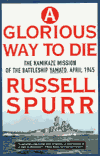Professor P. M. S. Blackett, head of a special Admiralty committee for anti-submarine measures, first proposed the idea of an expendable sonar system or, sonar buoy, in May 1941. His idea was for a buoy sonar or "detector buoy" to be dropped from ships to listen for submarines trailing a convoy. Tests were conducted by Britain that showed the idea was feasible. But, with limited resources nothing more was done with the idea at the time. Because RCA had provided the prototypes for this buoy, the U.S. was also aware of the idea.
Once America entered the war, the US Navy found that aircraft using MAD gear were frequently detecting wrecks and other non-submarine targets because they could not distinguish between them using MAD. The U.S. revived the buoy idea at the Undersea Laboratory in New London CT making a passive hydrophone buoy with a radio transmitter in it.
On March 7 1942 blimp K-5 tested this new device on submarine S-20. It was found that detection was possible up to 3 NM. However, as the hydrophone was still non-directional several buoys were needed to localize a target. For this reason MAD was to remain considered the primary means of detection. Experience with these systems during the war soon changed this as recounted above.
The first operational sonobuoy was the AN/CRT-1 first ordered in June 1942. Operational use began in August of that year. This sonobuoy had 6 available radio frequencies and the hydrophone was omni directional. The buoy was capable of 6 hours of operation.
In February 1943 the formal design of a directional sonobuoy was begun. This became the AN/CRT-4. It began testing in early 1945. This sonobuoy had a rotating 11o beam that rotated through 360o every 12 to 20 minutes depending on sea state. Rotation was achieved by a special sea anchor that dropped from the buoy on entering the water. This anchor caused wave action to rotate the buoy through its search pattern. The AN/CRT-4 was introduced too late to have any effect on the war however.


